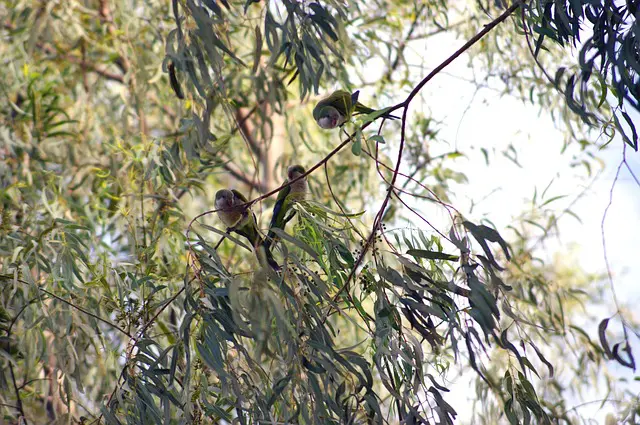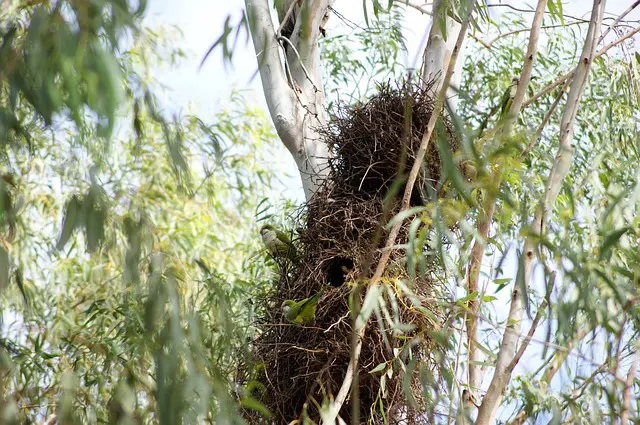Free-roaming parrots in Spanish cities

Monk parakeets in public green area
The current situation
In the public green spaces of some Spanish cities you can now admire exotic birds from different continents.
In a single park in Malaga city centre alone, a biologist identified four different species of free-roaming parrots:
• Monk parakeets
• Rose-ringed parakeets
• Senegal parrots
• Scaly-headed parrots
In 2015, the bird conservation association SEO Birdlife attempted to determine the number of wild parrots in the most important cities in Spain. There were about 20,000 monk parakeets and 3,000 collared parakeets.
Most of them were observed in Madrid and Barcelona. However, they were also found in the parks of Valencia.
If you want to get a full understanding of the problem yourself, you should sit on a bench under a tree in the Jardines del Turia of Valencia.
How did this “invasion” of exotic birds come about?
The parrots are not illegal immigrants; they originally came to Spain through the legal trade in exotic birds from countries such as Argentina, Uruguay, Senegal or Pakistan.
Official statistics show the extent of these imports. In the period 1986 to 2015, approximately
- 190,000 monk parakeets and
- 63.0000 rose-ringed parakeets
were legally introduced.
Both bird species are caught in their natural environment. They are not breeding birds, as is the case with other popular exotic bird species.
Many of the birds kept as pets escaped from their cages or were released by their owners when neighbors repeatedly complained about the “annoying” shrieking.
In 2013, the Spanish government banned the keeping and importation of monk and collared parakeets- far too late from a biologist‘s point of view.
This is because the free-living population was already in the process of growing exponentially.
What is meant by invasive alien species?
The German Animal Welfare Association writes:
- A “non-resident species” taken from its natural environment to another, foreign territory or land, manages to survive there and then reproduce.
- These species become “invasive” as they spread, thereby endangering biodiversity, other animal and plant species and thus also native ecosystems.
In Spain, monk and rose-ringed parakeets are on the List of invasive species of the Ministerio para la transicion ecologica (Ministry of ecological transition).
The number of free-roaming parrots is to be significantly reduced in Madrid
At the beginning of October 2019, the Madrid City Council announced that the majority of free-living monk parakeets would be captured and killed from autumn 2020.
In addition, plans are being made to sterilize the eggs of the invasive bird species because the birds endanger native bird species.
It is argued that the parrot species are multiplying rapidly. Since 2016 alone, population growth has been 33%.
The city council’s biodiversity officer also announced that the animals
- cause considerable noise disturbance, which bother residents
- spread diseases to other bird species
- steal food from other birds and drive them away
There is also concern that their nests would endanger passers-by if they fell from a tree. Nests usually weigh 40 – 50 kg, but can also weigh up to 200 kg.

nest of monk parakeets
PACMA immediately launched a campaign to save the animals
The Animal Welfare Party writes on its website on 10.10.2019 that the Madrid City Council‘s plan is not an ethical killing.
According to PACMA’s understanding, the birds are to be captured with nets and then gassed. This is an extremely painful procedure in which the parakeets might never lose consciousness.
PACMA is instead calling for the birds to be surgically sterilized.
The organization is urging all animal lovers to make it clear that the complaints of 200 citizens of Madrid are in contradiction to thousands of empathetic people who want to live peacefully and harmoniously with animals.